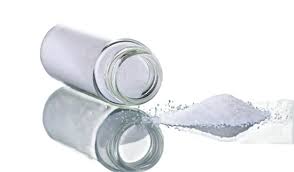
- +86-13363869198
- weimiaohb@126.com

Nov . 14, 2024 12:59 Back to list
tadalafil cas 171596-29-5
Understanding Tadalafil A Comprehensive Overview
Tadalafil, commonly known by its brand name Cialis, is a medication that has revolutionized the treatment of erectile dysfunction (ED) and pulmonary arterial hypertension (PAH). Its chemical structure is defined by the CAS number 171596-29-5. Tadalafil belongs to a class of drugs known as phosphodiesterase type 5 (PDE5) inhibitors, which works by enhancing blood flow to specific areas of the body, particularly the penis.
Mechanism of Action
The primary mechanism of tadalafil involves the inhibition of the PDE5 enzyme. Under normal circumstances, sexual stimulation causes the body to release nitric oxide, which leads to an increase in cyclic guanosine monophosphate (cGMP) levels. cGMP is crucial for relaxation of smooth muscles and increased blood flow. PDE5 breaks down cGMP, which can hinder the vasodilatory effect needed for an erection. By inhibiting PDE5, tadalafil allows for prolonged cGMP activity, ensuring improved erectile function in men suffering from ED.
Approved Uses
Tadalafil is primarily prescribed for
1. Erectile Dysfunction (ED) Tadalafil allows men to achieve and maintain an erection suitable for sexual activity. It is unique among ED medications for its longer duration of action, lasting up to 36 hours, earning it the nickname the weekend pill. This allows for more spontaneous sexual activity as it does not require a strict timing schedule.
2. Pulmonary Arterial Hypertension (PAH) Tadalafil is also approved for the treatment of PAH, a condition characterized by high blood pressure in the blood vessels that supply the lungs. By relaxing the blood vessels in the lungs, tadalafil helps to lower blood pressure and improve exercise ability in affected individuals.
tadalafil cas 171596-29-5

Dosage and Administration
The usual recommended starting dose for treating ED is 10 mg, taken before anticipated sexual activity. Depending on efficacy and tolerability, the dose may be adjusted. Tadalafil can also be taken daily in a lower dose (2.5 to 5 mg), allowing for more spontaneous sexual activity without the need for planning. When prescribed for PAH, the standard dose is typically 40 mg per day, divided into smaller doses.
Side Effects and Precautions
While tadalafil is well-tolerated by many, it is essential to be aware of potential side effects. Common side effects include headaches, flushing, indigestion, back pain, and muscle aches. These side effects may diminish with time as the body adjusts to the medication.
It is crucial for patients to discuss their medical history with healthcare providers. Tadalafil should not be taken with nitrates, commonly prescribed for chest pain, as the combination can lead to potentially dangerous drops in blood pressure. Patients with significant cardiovascular issues should also exercise caution when using tadalafil.
Conclusion
Tadalafil, identified by its CAS number 171596-29-5, is an extraordinary medication that provides relief from the symptoms of erectile dysfunction and improves the quality of life for individuals with pulmonary arterial hypertension. Its long duration of action and ease of use make it a preferred choice among both patients and healthcare providers. However, as with any medication, it is essential to use tadalafil responsibly and under medical supervision to ensure safety and efficacy. As research continues, tadalafil’s role in treating various conditions may expand, offering hope to many patients seeking effective solutions for their health issues.
-
GS-441524 for White Liquid Factories: Boost Efficiency & Purity
NewsAug.04,2025
-
Premium Pharma Intermediates | AI-Optimized Synthesis
NewsAug.03,2025
-
GS-441524 White Liquid Production for Factories | AI-Optimized
NewsAug.02,2025
-
AI-Optimized CAS: 79099-07-3 Factories for High Yield
NewsAug.01,2025
-
Premium CAS 1451-83-8 Factory with GPT-4 Turbo | AI-Optimized
NewsJul.31,2025
-
Pharmaceutical Intermediates - AI-Optimized Synthesis & Purity
NewsJul.31,2025